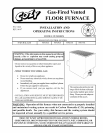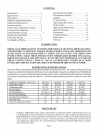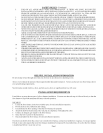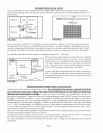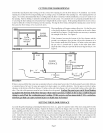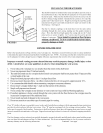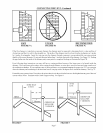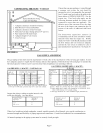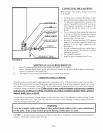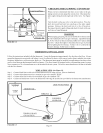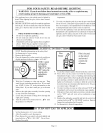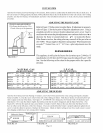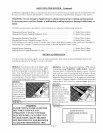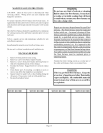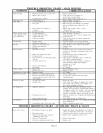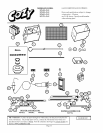
CONNECTING THE VENT - Continued
I
l I
l I
l
m
I I
1/4"
I I
I
SAFE UNSAFE
FIGURE 7A FIGURE 7B
RECOMMENDED
FIGURE 7C
If the floor furnace is vented into a masonry chimney, the chimney must be inspected to deterlnine that it is clear and free of
obstructions and that it is sate for the intended use. The inside of the chimney must be at least 6 inches in diameter or 6 inches
by 6 inches if rectangular. Insert the vent pipe into the chimney through a masonry or noncombustible corrosion-resistant
thimble of the correct diameter. Do not push the pipe fiartherthan ¼ inch into the inside of the chimney. See Figure 7A. Pushing
the pipe farther into the inside of the chimney may cause partial or complete blockage as illustrated in Figure 7B.
Even following these instructions you may still have a venting problem because of the larger area to be heated inside the
chimney. This could cause pilot outage, odors coming tioln the furnace, or noise due to excessive heat not being vented out of
the combustion chamber. If you experience any of these problelns, we recommend running the proper size "B" type vent pipe
down the chimney and connecting to the horizontal mn of vent pipe with a 90-de_ee elbow inside the chimney. See Fig. 7C.
Extend the vent system at least 3 feet above the point where it exits the roof and at least two feet higher than any part of the roof
system within 10 feet. Terlninate with a listed or approved cap. See Figure 9.
RIDGE
MORE THAN
10FEET m
CHIMNEY OR
METAL PIPE
3' MINIMUM
RIDGE
10' OR
LESS
<
I
2' Minhnum
CHIMNEY OR
METAL PIPE
3' MINIMUM
FIGURE 9
Page 7
FIGURE 9



